|
Space anomalies
|
|
| Niako | Date: Saturday, 17.01.2015, 22:34 | Message # 346 |
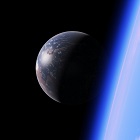 Space Tourist
Group: Users
 Spain
Spain
Messages: 21
Status: Offline
| Unstable Planet system
Trojan hot titan & selena in incredibly close orbit, and one with rings.

|
| |
| |
| catman007 | Date: Sunday, 18.01.2015, 02:53 | Message # 347 |
|
Observer
Group: Newbies
 United States
United States
Messages: 5
Status: Offline
| I found a black hole with 14 (!) stars in orbit around it:
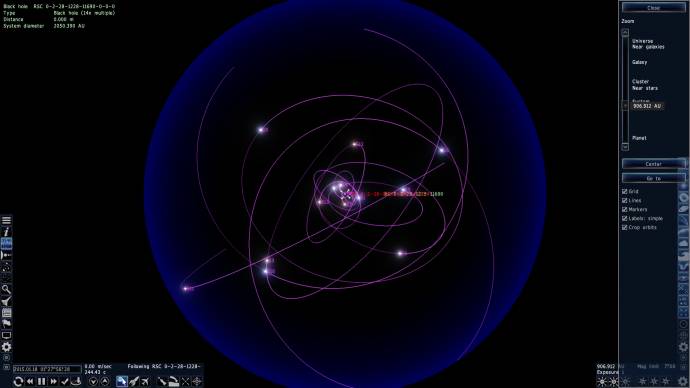
In other black hole news, I found a star only a few million kilometers from a black hole - they orbit each other:
$IMAGE2$
$IMAGE3$
Welp. Something went wrong with those two...I'll post the pics on another comment if y'all want me to lol.
Edited by catman007 - Sunday, 18.01.2015, 02:55 |
| |
| |
| Watsisname | Date: Sunday, 18.01.2015, 03:55 | Message # 348 |
 Galaxy Architect
Group: Global Moderators
 United States
United States
Messages: 2613
Status: Offline
| Quote catman007 (  ) I found a black hole with 14 (!) stars in orbit around it:
I don't think this is anomalous at all. It's what usually occurs in galactic centers. 

|
| |
| |
| catman007 | Date: Sunday, 18.01.2015, 06:02 | Message # 349 |
|
Observer
Group: Newbies
 United States
United States
Messages: 5
Status: Offline
| Oh...I see...oops 
Well here's this other one! Had to save it as a .jpg though :/ I think the black hole is pretty young, and the star is so close (same age)...seemed like an anomaly to me!
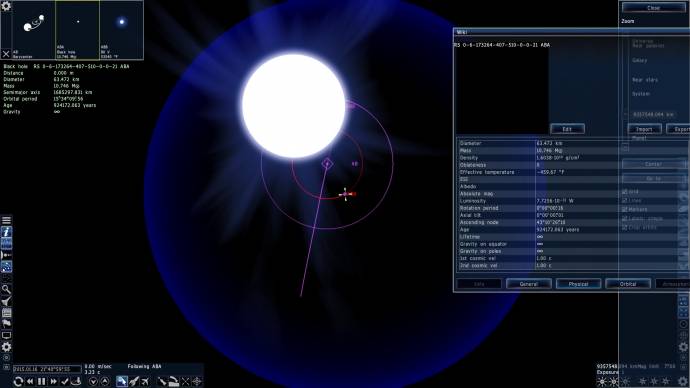
|
| |
| |
| KSpanier | Date: Sunday, 18.01.2015, 11:34 | Message # 350 |
|
Observer
Group: Users
 Germany
Germany
Messages: 16
Status: Offline
| I have found planets, that are hotter than their parent star:


"Cold" Asteroid with huge tail:

Glitch on the summit of a volcano:
 Added (18.01.2015, 10:34)
---------------------------------------------
Binary System with the lighter star becoming a giant first:


PS:
Negative Gravity? WTF???
Edited by KSpanier - Sunday, 18.01.2015, 11:29 |
| |
| |
| Watsisname | Date: Sunday, 18.01.2015, 20:10 | Message # 351 |
 Galaxy Architect
Group: Global Moderators
 United States
United States
Messages: 2613
Status: Offline
| Negative effective gravitational acceleration. The already very low surface gravity is being very slightly dominated by centrifugal force.
I'm not sure just how realistic that is (that centrifugal force could dominate to make a negative potential in a realistic star), but the low surface gravity part to begin with is common to very large stars. Their outer atmospheres may also pulsate and, combined with radiation pressure, be shed into space.

|
| |
| |
| KSpanier | Date: Sunday, 18.01.2015, 20:25 | Message # 352 |
|
Observer
Group: Users
 Germany
Germany
Messages: 16
Status: Offline
| Quote Watsisname (  ) Negative effective gravitational acceleration. The already very low surface gravity is being very slightly dominated by centrifugal force.
-1.9g isn't exactly "low" gravity (look at the O-Type Star)
|
| |
| |
| apenpaap | Date: Sunday, 18.01.2015, 20:41 | Message # 353 |
 World Builder
Group: Users
 Antarctica
Antarctica
Messages: 1063
Status: Offline
| Giants often lose mass, presumably this is why the giant is lighter.
I occasionally stream at http://www.twitch.tv/magistermystax. Sometimes SE, sometimes other games.
|
| |
| |
| Unnamed | Date: Monday, 19.01.2015, 00:54 | Message # 354 |
|
Space Pilot
Group: Users
 Mexico
Mexico
Messages: 116
Status: Offline
| Looks like "normal" octuple star systems are still possible on 0.972!

Intel® Core™ i5-3210M CPU @ 2.50GHz 2.50 GHz 750 GB hard drive 4 GB RAM intel ®HD Graphics 4000 1GB video; oh and i use a lot of commas
|
| |
| |
| LucasVB | Date: Tuesday, 20.01.2015, 00:39 | Message # 355 |
 Observer
Group: Newbies
 United Kingdom
United Kingdom
Messages: 4
Status: Offline
| Found this blackhole really close to a Red Hypergiant (10.556 AU)


I also found this Warm Oceania Moon with rings with organic unicellular life close to a gas giant that also has rings!

PC Specs: Asus Z87-Pro, I5-4670K @ 4.2Ghz, Gainward GTX 780 Phantom, Corsair Vengeance Pro Series 2800Mhz 16GB (2x8GB) Gold, Corsair RM650 Gold, Corsair H80i.
Edited by LucasVB - Tuesday, 20.01.2015, 06:31 |
| |
| |
| KSpanier | Date: Tuesday, 20.01.2015, 12:20 | Message # 356 |
|
Observer
Group: Users
 Germany
Germany
Messages: 16
Status: Offline
| Planetary system, where multicellular life formed (!) on 3 of 6 planets:

The fourth one was later populated.
|
| |
| |
| TheMilkyWay | Date: Tuesday, 20.01.2015, 16:24 | Message # 357 |
 Observer
Group: Newbies
 Netherlands
Netherlands
Messages: 5
Status: Offline
| Is this normal? I found a gas giant with 465 moons.
|
| |
| |
| Fireinthehole | Date: Tuesday, 20.01.2015, 17:02 | Message # 358 |
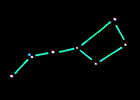 Pioneer
Group: Translators
 Sweden
Sweden
Messages: 356
Status: Offline
| Quote TheMilkyWay (  ) Is this normal? I found a gas giant with 465 moons.
It's normal. I've found gas giants with over 900 moons 
Love SpaceEngine!
|
| |
| |
| Irigi | Date: Tuesday, 20.01.2015, 18:45 | Message # 359 |
|
Observer
Group: Users
 Czech Republic
Czech Republic
Messages: 18
Status: Offline
| I have found an interesting thing: The selected moon on the picture orbits a gas giant around a white dwarf. The moon has temperature 74 Celsius degrees, while the radiation equilibrium temperature and the temperature of the gas giant is -227 Celsius. Yet, the greenhouse effect on the moon is just 8 Celsius. Where does the excessive temperature come from? Tidal heating?
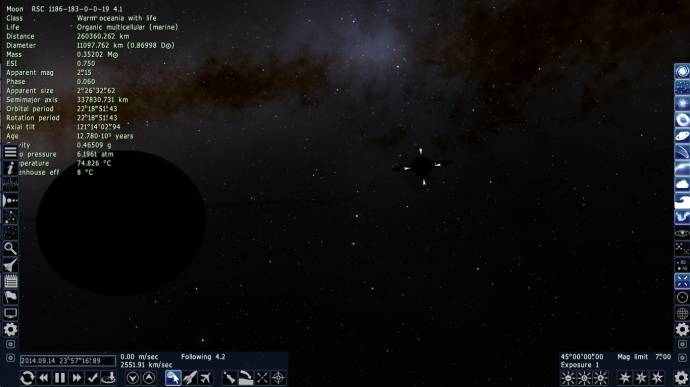
|
| |
| |
| Stargate38 | Date: Tuesday, 20.01.2015, 22:13 | Message # 360 |
|
Astronaut
Group: Users
 United States
United States
Messages: 58
Status: Offline
| Yep. It's tidal heating. I've found lots of those.  I've also found a gas giant with 701 moons, of which only 1 has life. I've also found a gas giant with 701 moons, of which only 1 has life.
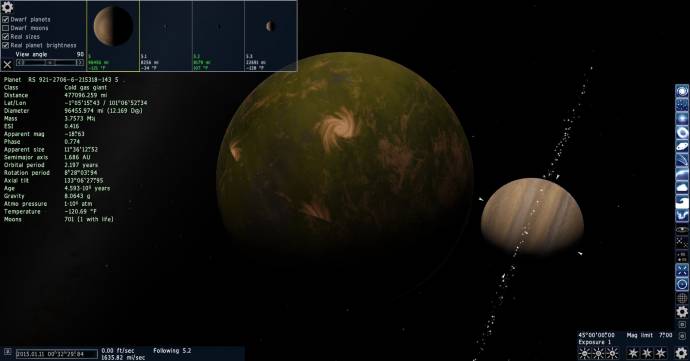
|
| |
| |